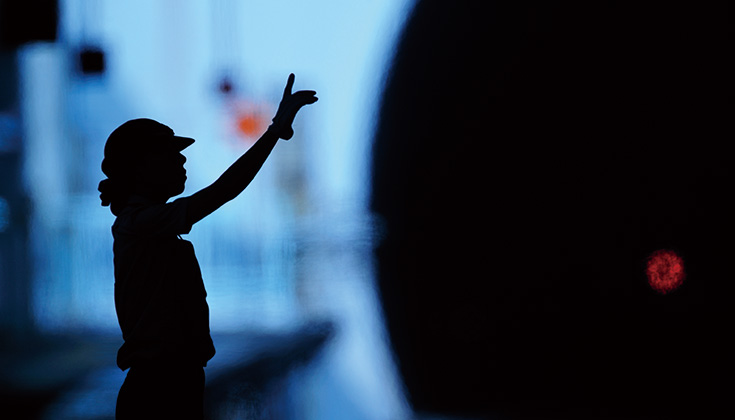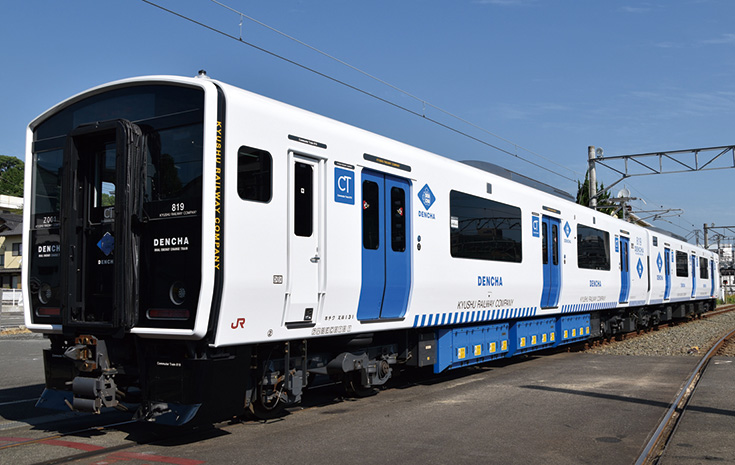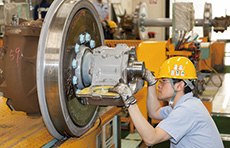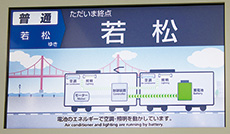niponica is a web magazine that introduces modern Japan to people all over the world.
2017 No.20
Railway Journey across Japan

Train Travel Today:
Greater Comfort
and Safety
People and Technology Drive Japan’s Railways
The wonder of Japan’s railways goes far beyond the speed of the Shinkansen.
Other remarkable key elements include on-time performance, safety, comfort, and energy conservation—
all achieved while smoothly operating at mass-transit capacity.
The synergy of people and technology is the power that drives this outstanding train system.
Photos: Aflo, Kyushu Railway Company, Central Japan Railway Company, Nakai Seiya, Hitachi, Ltd., and Mashima Railway Pictures Co., Ltd.

Next-Generation Eco-Train “DENCHA”

“DENCHA” runs in Kyushu from autumn 2016.
Next-generation trains running on batteries have arrived with the “DENCHA” battery-powered electric cars developed by JR Kyushu. “DENCHA,” which stands for “DUAL ENERGY CHARGE TRAIN,” can recharge its batteries while running on electricity from overhead power lines so that it can keep going in areas without power. The mechanism also allows it to regenerate power from the braking system and can save energy and reduce carbon dioxide emissions by 40 to 50% compared with diesel trains on lines without electricity. There is also no exhaust gas.

Tokaido Shinkansen and Continued Evolution
“There is no end to the evolution of the Shinkansen,” says Ueno Masayuki, one of the people responsible for its development. JR Central collects detailed data on the operation of all of its trains and analyzes it constantly while performing other research with the aim of making the Shinkansen more comfortable, more accurate, and safer. The new N700S train slated for release in 2020 is the culmination of ideas conceived of by a group of engineers following such dedicated research. Let’s take a look at a few examples of evolution in the new Shinkansen.
[1] Less wobble for greater comfort
The shape of the tip of the Shinkansen is one of the important factors that affect the riding comfort of the passengers. A method of aircraft design was introduced in development for the first time for the Series N700 that appeared in 2007. The newly developed model N700S features a new “Dual Supreme Wing” shape designed in the image of spread wings after repeated 3D studies and experiments analyzing aerodynamic drag. This has resulted in less wobble from wind resistance and swirling air caused by the high-speed train as well as a reduction in noise generated when passing through tunnels.
Evolution of Shinkansen nose

The front shape of the N700S has been evolved to cut noise and wobble for a more comfortable ride.
*The position of the lights is to be determined.
[2] Energy savings through compact, lightweight design
The weight of operation-related electronic equipment of new trains has been reduced by about 20%, leading to further energy savings. Next-generation semiconductors--developed jointly with an electronics company--deliver higher power with less loss and operate at higher temperatures. These achievements, combined with train-draft cooling, have given operation-related equipment a lighter and more compact design.
[3] Safety enhanced by shortening braking distance
Revisions to the system to automatically keep the train under the speed limit and the braking mechanism helped shorten the automatic braking distance during an earthquake by 5% compared to the N700A. Although this may seem minimal, it leads to a safer Shinkansen, especially in terms of more quickly stopping the train when an earthquake occurs.

A commitment to research, one of the strong points of the Japanese, has led to improvements in technology for high-speed rail.
This steady and constant evolution is the reason the Shinkansen remains the world’s premier train system after all these years.






